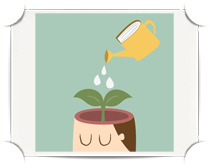 Creating your first e-learning course can seem like a daunting, if not impossible, task. An endeavor that fills you with questions: How do you come up with the appropriate content? How do you organize your material? How do you go about with your eLearning content development process? How can you tell when your e-learning course is ready? Where do you even start? Is there a defibrillator nearby?
Creating your first e-learning course can seem like a daunting, if not impossible, task. An endeavor that fills you with questions: How do you come up with the appropriate content? How do you organize your material? How do you go about with your eLearning content development process? How can you tell when your e-learning course is ready? Where do you even start? Is there a defibrillator nearby?
Take a deep breath and relax. We’re here to help you with solid, time-tested, advice that has worked for countless educators. After all, writing e-learning courses is not rocket science (except if you’re writing rocket-science courses, in which case it is).
Begin at the beginning
Writers call it “fear of the blank page”. In your case it’s more like fear of a blank screen, but the point remains: how do even begin to fill all this empty space and get started on that e-learning course?
We won’t get any awards for originality for saying this, but why don’t you begin at the beginning? Don’t feel pressed to complete the first chapter or even the first page at your first sitting. Merely writing the first paragraph of the first chapter is a great way to overcome your fear. More often than not you’ll find that the next paragraph will come by itself. And then the next.
Create a high level outline
If forcing yourself to write the first paragraph of your e-learning course worked to get you started, then you could go on and continue linearly until you finish a first rough draft. A lot of writers work this way. Jack Kerouac, famously, taped paper together in huge rolls, so he wouldn’t be disturbed by changing sheets on his typewriter while writing tens of pages in one go.
If you’re a more conceptual kind of person, however, you can start by creating a high level outline of your content. List its chapters and, if you can, its sub-chapters. Try various arrangements of the chapters to see what works best. If you get any ideas about the contents of a chapter, scribble them down too.
This overview and any notes you keep, can serve you as the basic skeleton of your e-learning course. Don’t wait until you got it perfectly right. You can always add new chapters, remove existing ones, and re-arrange them to your heart’s content later.
Stick to a routine
Now that you’ve hit the ground running, so to speak, it’s important not to lose any momentum. That doesn’t mean that you have to write for long hours every day until you’re dead from exhaustion ― in fact that can be downright counterproductive and burn you out.
What you need to do is stick to a specific writing routine. Set some hours everyday aside for writing. It worked for Hemingway (or Stephen King, if that’s your thing), and it can work for you too.
Set a specific, attainable goal, like 300 words per day. If you set a much higher goal, you’ll inevitably get tired at some point, and give up on the whole venture. If on the other hand you keep a steady pace, you’ll have a thick book worth of material in six months or so.
Borrow, copy and steal
“Lesser artists borrow”, says the old adage, “great artists steal”. Of course you’ll want to avoid a lawsuit and a lengthy trial, but that doesn’t mean you can’t in between copy, learn, and adapt content from other people and services.
Check books with the same or similar subject matter. Check the work of your competitors and colleagues. How are their classes structured? What are the advantages in what and how the teach? What are the disadvantages? Do they have something good you can use in your own material?
You should draw the line at stealing. The original author has the copyright and the moral right to his content. Getting some inspiration is OK, copying verbatim is not. Tell your story, your way. And if you have to quote them, make sure that people know where the quote comes from.
Move fast, fill-in details later
Whatever you do, don’t spend all your time belaboring some specific chapter or content, even if it’s a particularly tricky one. Move fast, continue to write page after page, and only come in fill the details it. As we already said, momentum and steady pace is more important than detail work, at least in the first stages.
Start with a rough sketch. You can always come back later and add anything you missed the first time. As you keep doing several passes on the content, the e-learning course will start to shape up to its final form.
Iterate
Unless you’re some kind of prodigy, the secret to creating a polished end result is not some magical ability to conceive it in its perfect final form (the way Mozart wrote his operas), but rather constant iteration and refinement (the way Beethoven toiled on his symphonies).
So iterate away. Write a first draft, then a second one, change things here and there, flesh out generic outlines, etc, until you are satisfied with the final results.
Don’t just judge your progress yourself though: ask around, collect feedback with surveys, plan for improvements, have some students take your e-learning course for a test drive, analyze their test and learning statistcs, optimize whatever needs optimizing, etc.
When you’re done, you’ll know it. Plus, even if you don’t, “where do I stop” is a much better problem to have than “where do I start”.